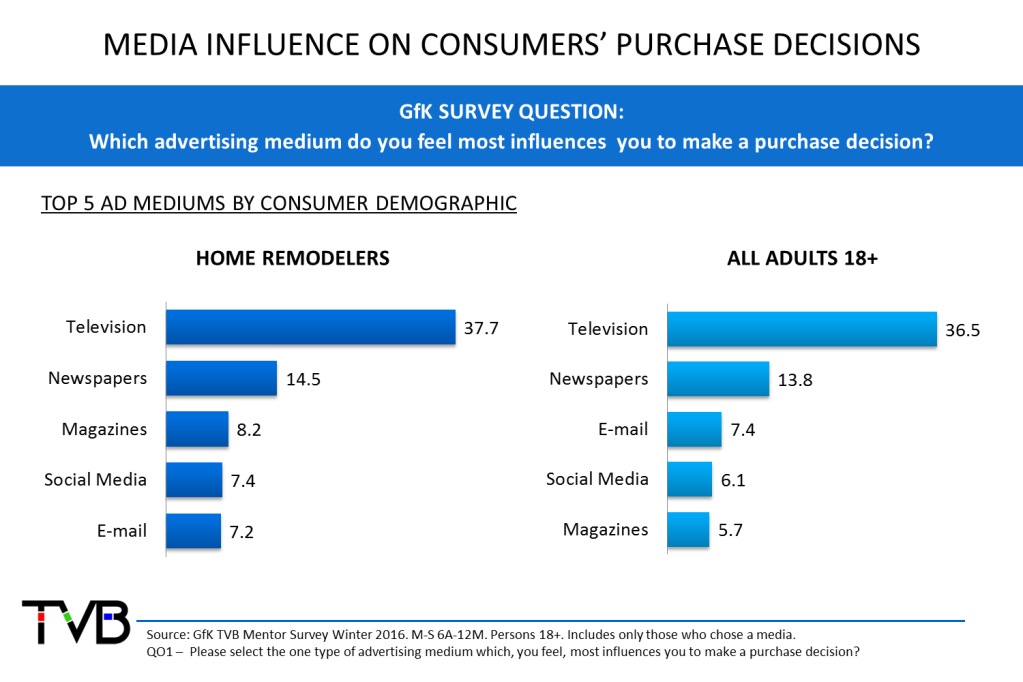As families gather together this Thanksgiving, there’s one tradition that’s become almost as entrenched as turkey and cranberry sauce: gathering around the television.
In this digital age, it can be easy to ignore TV in favor of pay-per-click or social media, but new research suggests that would be a mistake. In fact, almost 38% of people looking to do home improvement in the next year said TV advertisements most influenced their purchase decision, versus just slightly more than 7% for social media and email, according to a GfK Research Media Comparisons study.
Additionally, the study showed the following about people looking to do home improvements in the next year:
- They spend more than five hours a day with TV, or three times more hours/minutes than with the next closest media platform. Radio was second at 1.5 hours (not including digital); email at 1 hour; and social media less than 1 hour.
- With an influence of 14.5%, newspapers were the next most powerful advertising medium
- 61% said TV advertising motivated them to research that product or service online
But even proponents of television admit that digital forms of advertising has changed the nature of marketing.
“In no way shape or form are we knocking digital,” said Hadassa Gerber, chief research officer with TVB, the trade association of America’s local broadcast television industry, which funded the independent study. “These are synergistic platforms, especially if someone is advertising on a local TV station and its website. This is not an either or situation. You should be doing both TV and the Internet. But people forget how strong TV is.”
Part of that strength again goes to the complimentary nature of TV with the web, Gerber said. The web is used mainly during the day when people are at work, while TV use peaks in the evening. “This is the big ‘a ha!’,” she said.
Another strong point of TV is trust, Gerber added. The study showed that local broadcast news had the highest trust among respondents at 81%, compared to just 34% of people saying they trust social media. “It seem to follow that if you don’t trust what you’re looking at, it affects everything around it,” she said.
Of course, all those benefits come with a cost. Producing a TV spot with a agency to run locally can cost thousands of dollars, according to a report from AllBusiness.com. Additionally, it can be difficult to effectively target local markets, warns Darren Slaughter, a contracting marketer.
“Frequency is the name of the game in television advertising, but the market is expensive to reach,” he concludes on his blog.
But even with those downsides, some contractors looking to take their company to the next level recognize that TV is a must, said John Gorman, owner and president of Save Energy Company. Gorman said he’d been getting a lot of leads through pay-per-click, but then Google changed its algorithm. He also wanted to grow his company from $3 million in annual sales to $4 million and knew he’d have to diversify his marketing.
“So we said what do we need to do to take the next step?” he said. “We looked at TV and radio and decided TV would be a better place to go. It’s just hard to be beholden to one thing.”
